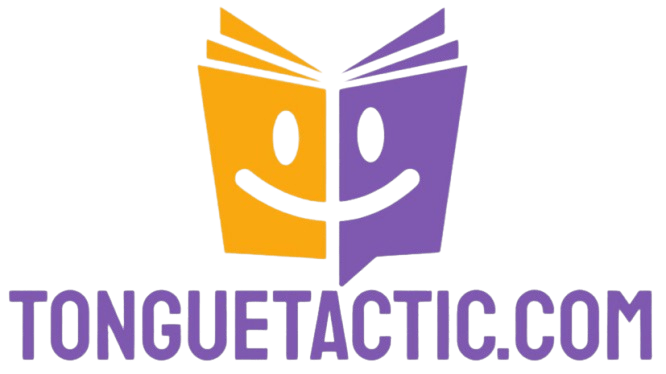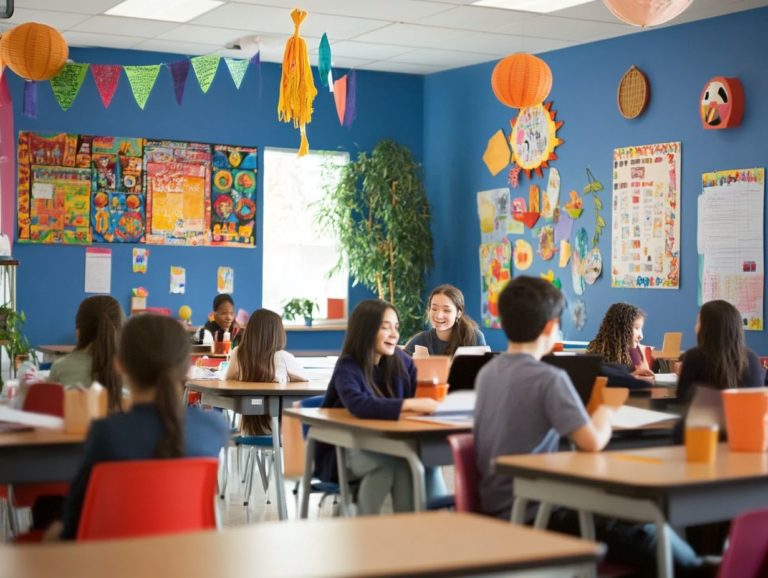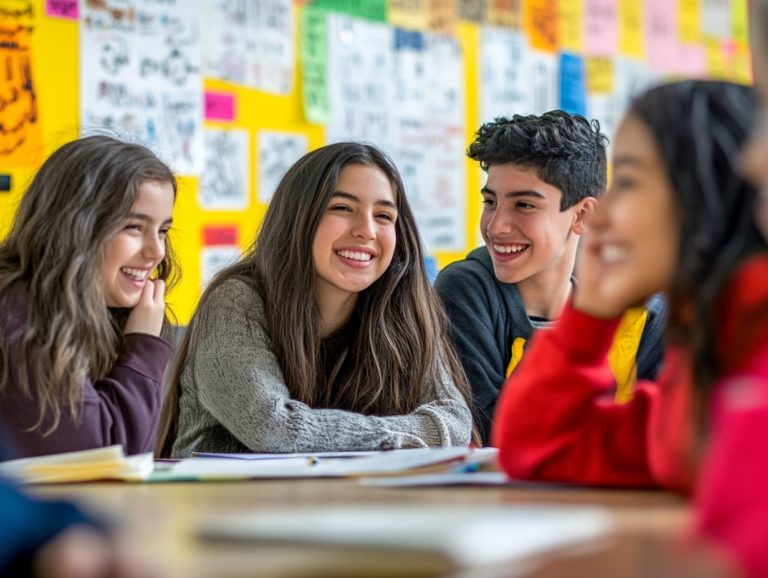how to use film for language learning immersion
Incorporating film into your language learning journey can elevate your study routine from the mundane to the extraordinary. It provides an engaging avenue to immerse yourself in a new language.
This article explores the benefits of learning a language by surrounding yourself with films. It offers guidance on how to select the right movies, create an effective viewing environment, and use active learning techniques.
You’ll discover activities designed to enhance your understanding and retention, ensuring a well-rounded experience.
Get ready to explore language learning through the captivating medium of cinema!
Contents
Key Takeaways:
- Choose films that captivate you.
- Create an immersive viewing space.
- Engage with study techniques to boost retention.
The Benefits of Immersion Learning
Learning by surrounding yourself with the language is a powerful approach to language acquisition that offers numerous benefits. By engaging with films and TV shows in your target language, you gain a richer understanding of vocabulary and grammar while sharpening your listening and reading skills. Exploring immersive techniques for faster language learning can further enhance this experience.
This method also engages your mind and nurtures cultural awareness. It enables you to connect with native speakers and understand dialects, which ultimately enhances your fluency and comprehension.
Beyond refining your language skills, this learning style lightens your cognitive load. You absorb information organically rather than relying on tedious memorization. This immersive environment fosters critical thinking and problem-solving in real-world situations, making your learning experience more relevant.
Exposure to captivating content such as popular music, podcasts, and literature reinforces vocabulary and comprehension while deepening your appreciation for cultural subtleties.
By employing effective learning strategies, you can boost retention and cultivate a more intuitive grasp of the language. This leads to improved conversational abilities and greater confidence in your communication.
Choosing the Right Films for Language Learning
Selecting the right films is vital for enhancing your language learning journey, as the type of content you engage with can significantly affect your progress.
Whether you prefer scripted series or the spontaneity of reality TV, your choices matter. They can help expand your vocabulary and improve your understanding.
Utilizing subtitles can provide valuable support, and adjusting audio settings can personalize the experience to meet your learning goals, ensuring you immerse yourself effectively.
Factors to Consider
When choosing films for your language learning journey, consider several key factors that can impact your engagement and efficiency. The difficulty level of the dialogue is crucial; beginners might find children’s movies easier, while advanced learners may prefer complex narratives to challenge their comprehension skills. Additionally, you might want to explore how to use subtitled videos for language learning to enhance your experience.
Understanding the cultural context and plots can enhance your retention of common phrases, making the experience more effective.
For example, animated films like “Finding Nemo” offer clear dialogue and relatable themes, making them ideal for novices. In contrast, films such as “The Motorcycle Diaries” or “Amelie” delve into deeper social contexts and diverse vocabularies, catering to those with a foundational grasp of the language.
Exploring a variety of genres such as romantic comedies or historical dramas can expose you to different linguistic styles and cultural nuances. By incorporating these films into your study sessions, you not only enhance your vocabulary retention but also spark discussions on cultural perspectives, enriching your overall learning experience.
Creating an Immersive Learning Environment
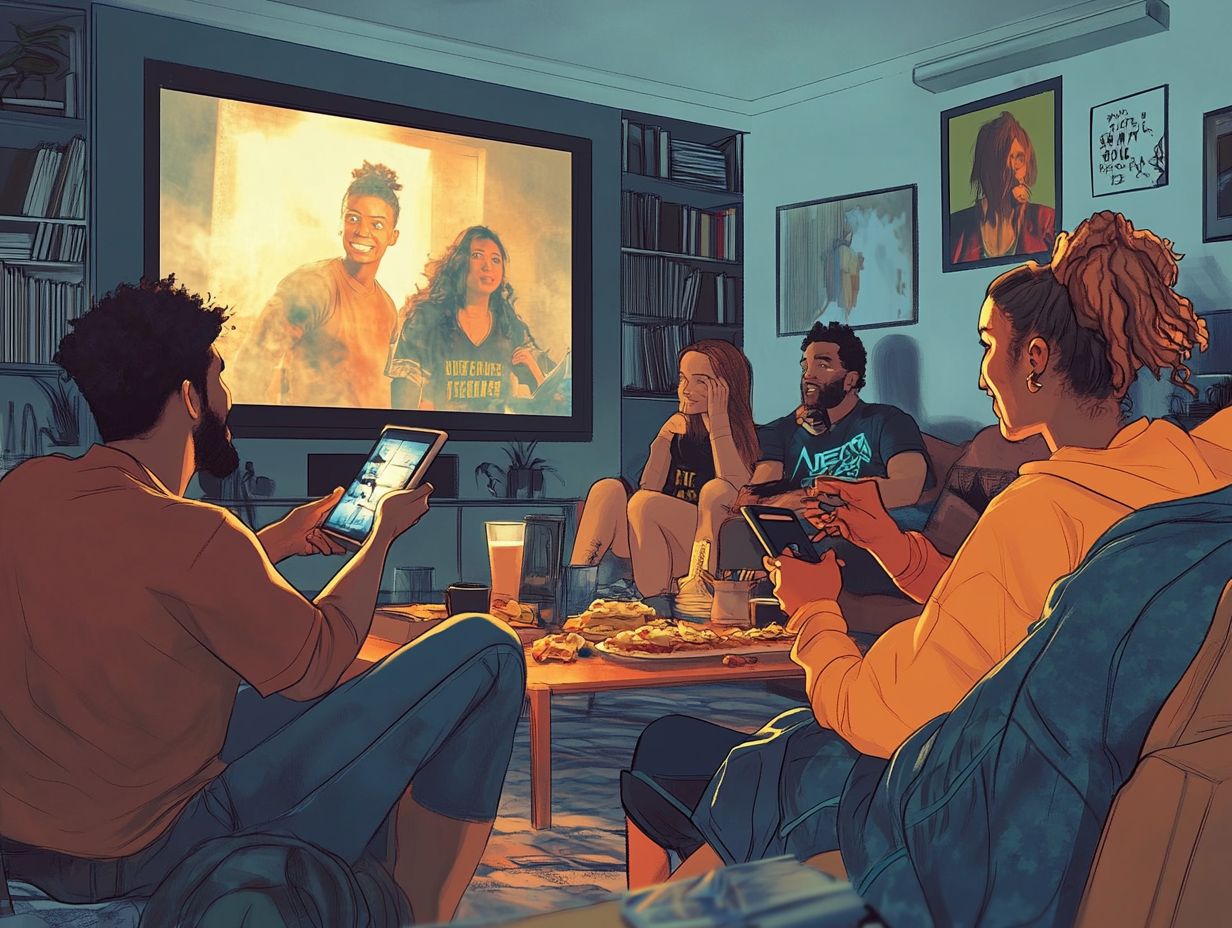
Elevate your language learning by creating an immersive environment. Use various audio and visual elements to boost your understanding and engagement.
Fine-tune audio settings to match your proficiency level. Integrate visual cues, like subtitles or on-screen text, to enhance vocabulary retention.
This approach creates a feeling of being surrounded by the language. It encourages consistent practice and familiarity, setting you up for lasting success.
Setting Up the Viewing Experience
Establishing a structured viewing experience is essential. It lays the groundwork for effective understanding.
Thoughtfully select audio settings choose between original voices or dubbed versions. Enable subtitles in the target language to enhance vocabulary recognition.
This creates a rewarding learning experience. You will build skills and stay engaged with the material.
Adjusting playback speed can cater to proficiency levels. Beginners may find slowed-down audio beneficial, while advanced learners might prefer a normal pace to challenge themselves.
Experiment with techniques like rewinding tricky segments and pausing to take notes. This combination of passive absorption and active engagement leads to a deeper grasp of pronunciation and context.
Techniques for Active Learning
Active learning techniques deepen engagement and enhance language practice. They invite dynamic interaction with the content.
Integrate strategies such as note-taking or discussion prompts during viewing sessions. This sharpens your focus on key dialogues, boosting listening skills and comprehension.
These methods transform passive film consumption into an active educational experience. You ll retain vocabulary and grammar concepts more effectively.
Methods for Engaging with the Film
Engaging with film content maximizes language acquisition, but exploring other avenues, such as how to use sports for language learning immersion, can also foster active listening and comprehension through interactive methods.
Effective techniques include pausing to analyze dialogue, discussing cultural nuances, and asking questions about plot points. These encourage deeper cognitive processing of the language.
This immersive approach enhances vocabulary and strengthens cultural understanding. It paves the way for more meaningful interactions with native speakers.
Create quizzes or challenges based on key scenes or character motivations. This stimulates critical thinking and reinforces language skills.
For instance, try predicting outcomes or summarizing scenes to deepen your connection to the material.
Such activities cultivate a richer grasp of idiomatic expressions and cultural references. Engage dynamically with the content!
When you collaborate with others to share insights or participate in discussions, you transform passive watching into an enriching experience. This contributes to your overall fluency and appreciation of the language.
Supplementing Film Viewing with Other Learning Activities
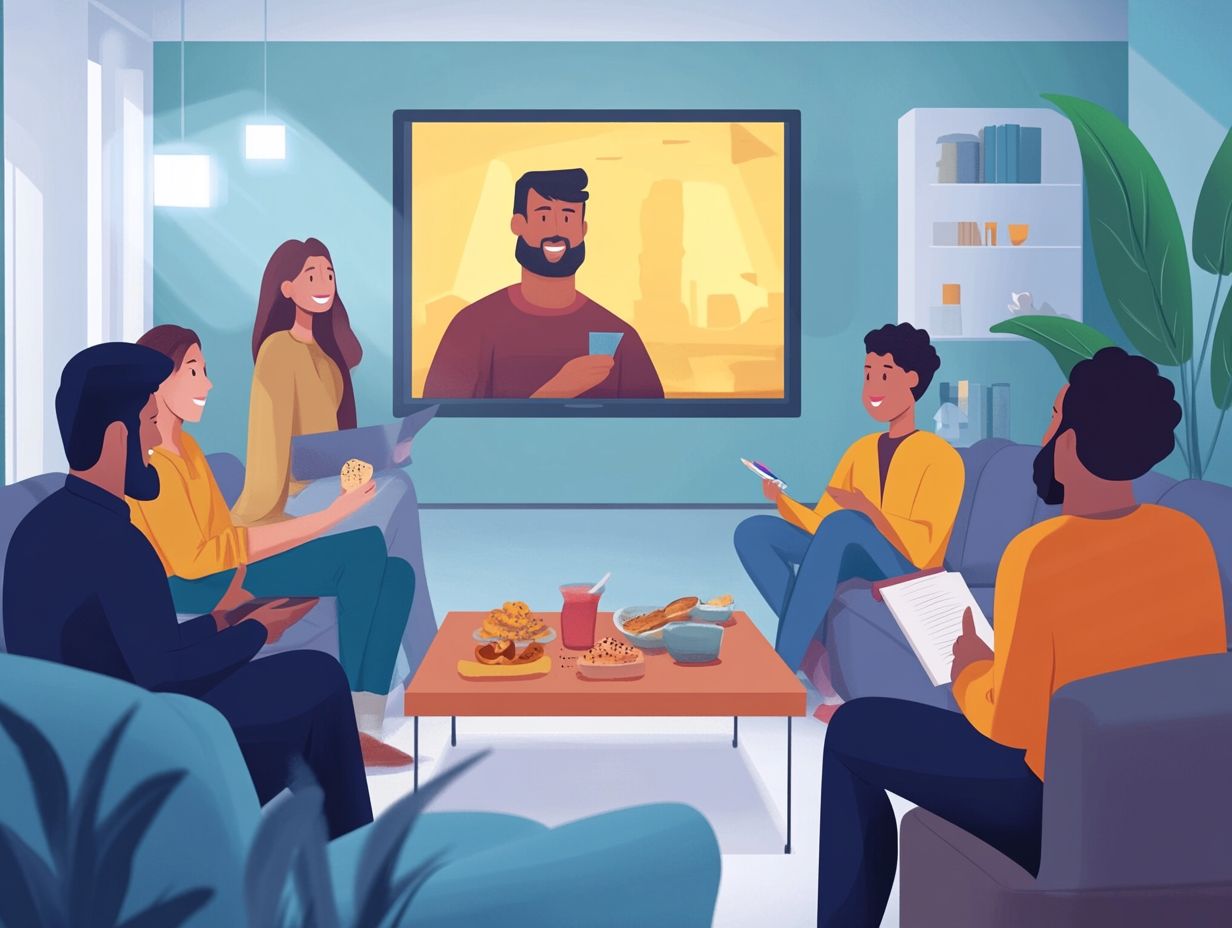
Supplementing your film viewing with additional activities greatly enhances language acquisition. It reinforces key concepts and expands vocabulary.
Dive into film analysis! By dissecting dialogue and character development, you ll uncover exciting insights that enrich your learning.
Incorporate writing exercises related to movie plots for valuable practice opportunities.
Don t miss out! These activities deepen your understanding and open doors to more language resources.
Effective Study Techniques
Implementing effective study techniques is essential for optimizing your language practice and achieving your learning goals. Techniques like spaced repetition, flashcards, and summarizing film content can reinforce comprehension while expanding your vocabulary.
By weaving these methods into your study routine, you enhance your ability to connect with the target language meaningfully. Additionally, learning how to use literature in language immersion and engaging with film clips rich in cultural context adds another layer to your understanding of language nuances.
When you take notes while watching, you capture key phrases and analyze dialogue patterns reflecting everyday usage. This mix of watching and note-taking makes it fun and easy to remember what you ve learned!
Striking the right balance with these techniques helps maintain an optimal mental effort, creating an enriching environment for your journey toward language mastery.
Maximizing the Language Learning Experience
To elevate your language learning experience, concentrate on retention and progression by embracing a blend of engaging content and effective strategies.
Start immersing yourself in diverse materials like foreign films and scripted shows to keep your motivation alive and reinforce your vocabulary and grammar skills.
Establish specific learning objectives and track your progress. This will serve as a roadmap on your journey toward fluency, ensuring dedication to your language practice.
Tips for Retention and Progression
- Review notes from films.
- Have conversations with native speakers.
- Leverage AI-based apps.
These strategies require a balanced approach that mixes different ways of learning with active practice. By regularly challenging yourself, you can ensure steady advancement in your language skills while deepening your connection to the language acquisition journey.
Set specific milestones and track your progress through technology to enhance your motivation. Using apps that monitor your daily practice sessions and provide personalized feedback allows you to celebrate small victories along the way.
These tools make your learning experience more engaging and offer valuable insights into areas needing improvement. Incorporating voice recognition features from AI technology can refine your pronunciation and conversational skills, creating a more immersive experience.
By blending traditional techniques with modern advancements, you cultivate a productive environment that promotes continual growth in your language journey.
Frequently Asked Questions
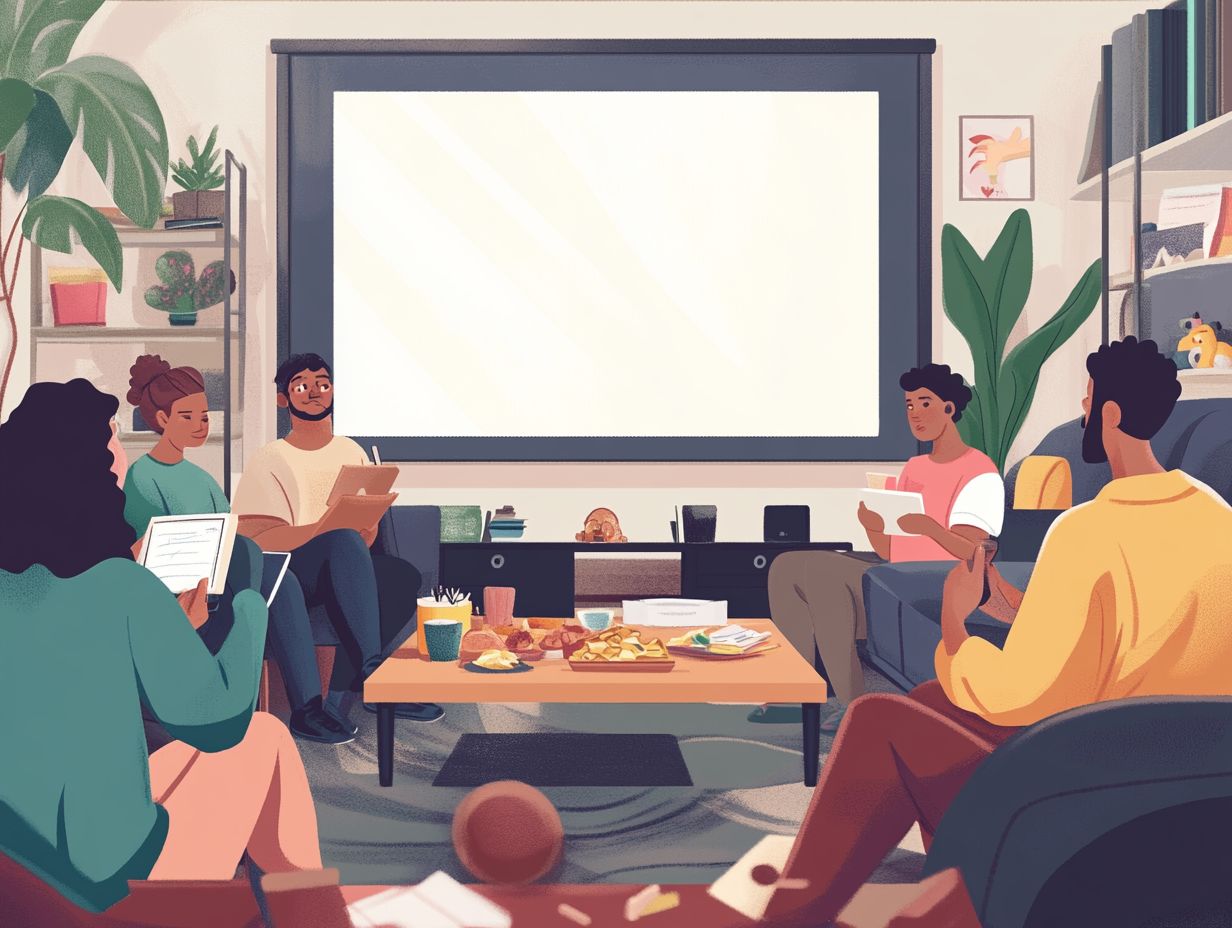
- 1. How can I use film for language learning immersion?
- To use film for language learning immersion, select a movie or TV show in the target language and watch it with subtitles in your native language. As you become more comfortable, switch to subtitles in the target language or turn off the subtitles entirely. This helps you immerse yourself in the language and improve your listening and comprehension skills.
- 2. Is it better to watch a movie or a TV show for language learning immersion?
- Both can be effective for language learning immersion. However, TV shows often have shorter episodes, making them easier to fit into your daily routine. Since TV shows have recurring characters and storylines, they can help you become more familiar with the language and improve your understanding.
- 3. Should I watch films that I’m already familiar with for language learning immersion?
- While it may be tempting to watch a movie you know well, it s better to choose a film in the target language that you haven t seen before. This will help you focus on the language rather than the plot, allowing you to pick up new vocabulary and expressions you might not have noticed otherwise.
So, dive into a film tonight and watch your language skills soar!
4. Are there any specific genres that are better for language learning immersion?
No specific genre is best for language learning. Choose a film or TV show you enjoy. This keeps you engaged and motivated throughout your learning journey.
5. Should I write down new vocabulary while watching a film for language learning immersion?
Writing down new words can help. However, don t get too caught up in taking notes; focus on understanding the language.
If you jot down words, review them after the movie. Try to use them in your practice.
6. Can watching films in the target language really help improve my language skills?
Absolutely! Watching films in the target language can boost your language skills significantly. It helps with listening, comprehension, pronunciation, vocabulary, and cultural understanding.
Plus, it s a fantastic way to immerse yourself in the language and make real progress.
